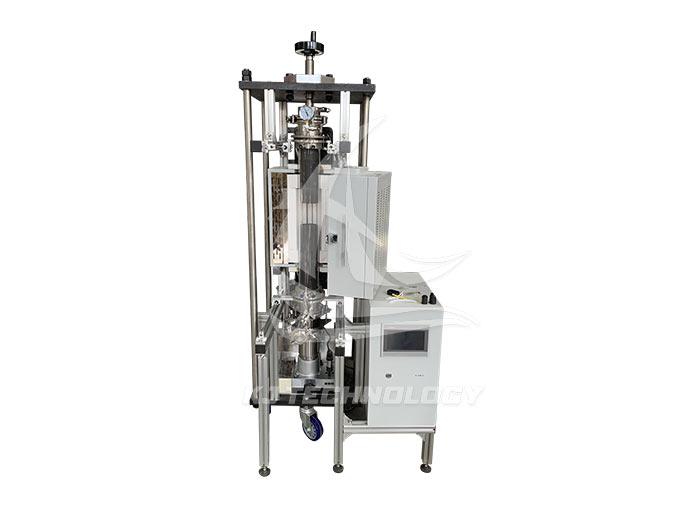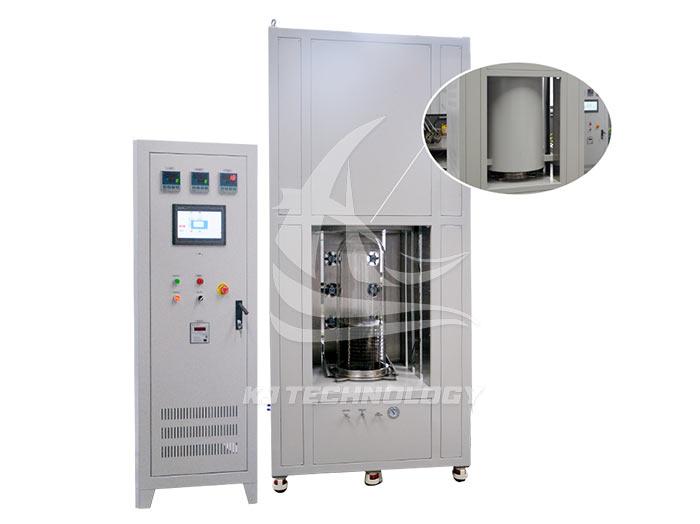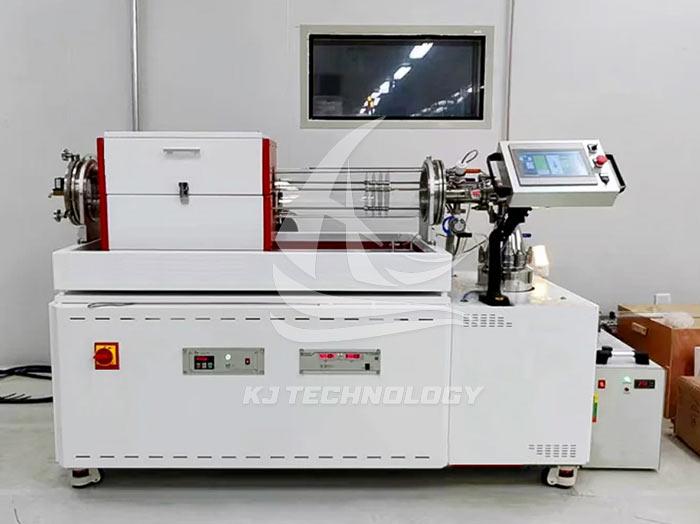Precautions for operating a vacuum hot press furnace for experiments
 09-22-2025 Author: KJ technology
09-22-2025 Author: KJ technology
The operation of the experimental vacuum hot press furnace must strictly follow safety regulations and process requirements. The following is a detailed explanation of key precautions:
1. Preparation before operation
Equipment inspection
Confirm that the equipment is stably placed, all knobs and valves are in their initial state, and the heating chamber is clean and free of debris.
Check if the water, electricity, and gas sources are normal: the water pressure should be ≥ 0.3MPa (the water-cooled electrode and pressure head should be separately supplied with water), the power supply voltage should match the equipment nameplate, and the purity of the gas source (such as argon and nitrogen) should meet the requirements.
After starting the electrical control cabinet, confirm that there are no alarm indications and that the digital displays of each instrument are stable.
Sample and mold preparation
Select a suitable graphite mold based on the characteristics of the sample, ensuring that the rated pressure of the mold is higher than the required pressure for the experiment.
The sample needs to be pre processed to meet the requirements of particle size and purity, avoiding direct contact with heating elements to prevent temperature measurement errors or component damage.
Environment and Safety
Operators need to wear protective equipment (such as insulated gloves and goggles), keep the experimental site clean, and ensure smooth passage.
Ensure the sealing ring of the furnace door is clean, wipe it with ethanol and apply vacuum grease to prevent air leakage.
2. Vacuum pumping and inflation operations
Vacuum extraction process
Rough pumping stage: Open the rough pumping valve, rotary pump, and front valve, and close the rough pumping valve when the vacuum degree is ≤ 6.0 × 10 ² Pa.
High vacuum stage: Turn on the Roots pump and diffusion pump. When the vacuum degree reaches the predetermined value, close the butterfly valve and open the main valve.
Emergency handling: If the vacuum degree is abnormal, immediately close the main valve and vacuum gauge to avoid oxidation of the regulation.
Inflating operation
Before inflation, the furnace needs to be washed three times: close the butterfly valve and main valve, open the inflation valve to -0.06MPa, and exhaust to -0.1MPa. Repeat this process three times, and inflate to+0.01MPa on the fourth attempt.
After inflation, maintain stable pressure inside the furnace to avoid rapid pressure relief that may cause sample oxidation or mold damage.
3. Heating and insulation control
Heating curve setting
Set segmented heating program based on material characteristics, for example:
Low temperature range (such as 1500 ℃): heating rate of 12.5 ℃/min, holding time of 2 hours.
High temperature section (such as 1800 ℃): heating rate of 5 ℃/min, holding time of 3 hours.
Avoid rapid heating that may cause sample cracking or equipment overload.
Temperature uniformity control
During the heating process, closely observe the temperature distribution and ensure that the thermocouple is inserted into the furnace by 20-50mm. Use compensating wires to connect the wires and ensure that the positive and negative poles are correct.
When the temperature is ≥ 1500 ℃, it is necessary to repeatedly calibrate the temperature difference between the thermocouple and the photoelectric thermometer to prevent damage to the workpiece.
4. Pressure operation specifications
Pre pressure and main pressure
Pre pressing: carried out before heating, with a pressure range of 1.0-1.5MPa, to ensure that the sample is in close contact with the mold.
Main pressure: Apply pressure after the temperature reaches the set value, and the pressure calculation needs to be combined with the force area of the mold.
During the pressurization process, observe the displacement indication. A small change in displacement indicates that the punch has made contact with the sample.
pressure control
Rotate the pressure potentiometer to the minimum and control the pressure through the "up stop down" switch to avoid mold breakage or sample deformation caused by overpressure.
The pressure regulation of the hydraulic system needs to be semi automated, with pressure stabilization and maintenance achieved through manual adjustment of instruments.
5. Cooling and Sampling
natural cooling
After the insulation is completed, turn off the heating system and maintain a vacuum state to naturally cool to room temperature (or ≤ 200 ℃) to prevent oxidation of the heater and insulation layer.
During the cooling process, continuously monitor the water pressure and temperature, and the drainage temperature should not exceed 40-50 ℃.
Sampling operation
After the furnace temperature drops to a safe range (such as ≤ 100 ℃), slowly release pressure to atmospheric pressure and use a jack to open the furnace cover.
Avoid impact or severe vibration during sampling to prevent sample cracking or mold damage.
6. Equipment maintenance and upkeep
Daily cleaning
Clean the heating chamber, furnace door sealing ring, and electrical control cabinet after each experiment, and regularly run the high-temperature furnace cleaning program.
Use a vacuum cleaner to clean the dust in the vacuum chamber and prevent contamination of the sample.
Regular maintenance
Check the oil level of the mechanical pump, the cooling water circuit of the diffusion pump, and replace the aging sealing ring.
Calibrate temperature controllers and pressure sensors to ensure data accuracy.
7. Emergency situation handling
Power outage/water outage
When there is a sudden power outage, immediately turn off the main power and use the water storage tank to cool the furnace body, electrodes, and water-cooled head.
Start the backup water supply system when there is a water outage to prevent equipment from overheating and damage.
Equipment failure
If the knob or button fails, press the "Control Power Switch" button; If it still doesn't work, disconnect the main switch directly.
Maintenance with electricity, water, or gas is prohibited and must be handled by professional personnel.








